"You're getting stuff the New York Times never will," Al Rockoff says, pointing to a series of framed images before him. "That's the truth."
The stuff is extraordinary: A single human hand being carried away by stretcher from the scene of a rocket attack.
The blackened, decomposing corpse of an AP photographer killed by Khmer Rouge troops.
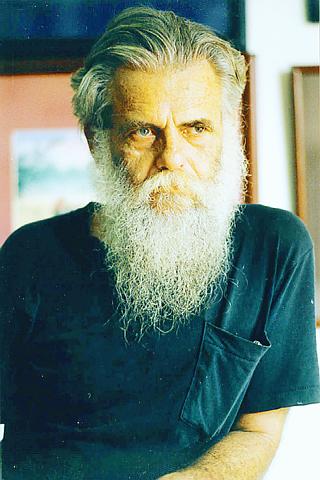
PHOTO: STEVEN O'CONNELL
A line of US Marines bracing against the wind kicked up by helicopter rotors during the American evacuation from Phnom Penh. For almost a decade, beginning as a US Army combat photographer in what he refers to as "the American war" in Vietnam followed by a stint as a freelance photographer from 1973-1975 capturing the brutal insanity of the Cambodian conflict and the eventual triumph of the Khmer Rouge, Rockoff gained a reputation for unforgettably macabre images he sold to Newsweek, AP, UPI, and the New York Times.
It was a brilliant career prematurely aborted by what he describes as a media "blacklist" against the use of his work following Rockoff's evacuation from the compound of Phnom Penh's French Embassy, along with the last remnants of the city's expatriate population, on May 7, 1975.
"I've been stiffed and ostracized," the bearded 52-year-old who was portrayed by the actor John Malkovich in Roland Joffe's film The Killing Fields says bitterly. "It's payback time."
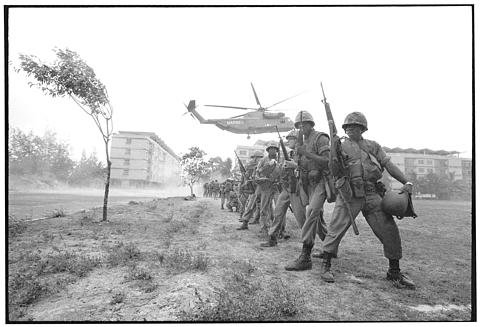
Payback, for Rockoff, is a special exhibition of his work in Phnom Penh to commemorate the 25th anniversary of the fall of the city to the Khmer Rouge on April 17, 1975.
It's an exhibition that Rockoff, out of all the photojournalists who covered the Indochinese conflict, is uniquely qualified to give.
"I shed blood for my art," he says of his passion for combat photography that led him to be wounded nine times and left him with the same unsettling thousand yard stare discernible in many of his subjects.
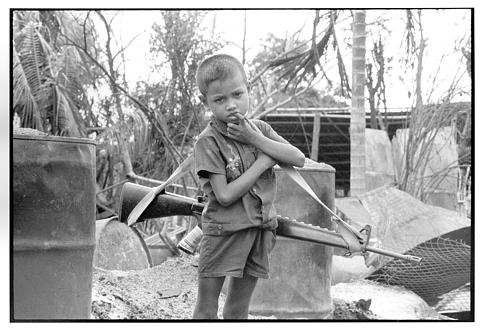
But it was Rockoff's coverage of the fall of Phnom Penh that was the pinnacle of a career he describes as "creative endeavor with an adrenaline rush."
As the Khmer Rouge entered Phnom Penh on April 17, 1975, beginning the systematic murder of military and government officials of the defeated Lon Nol regime and the evacuation of the general population to the Cambodian countryside, Rockoff roamed the city snapping incomparable photos of a society in its death throes.
"When the Khmer Rouge entered Phnom Penh people lined up along the sides of the street waving, while loudspeakers announced `the war is over , do not resist,'" he recalled.
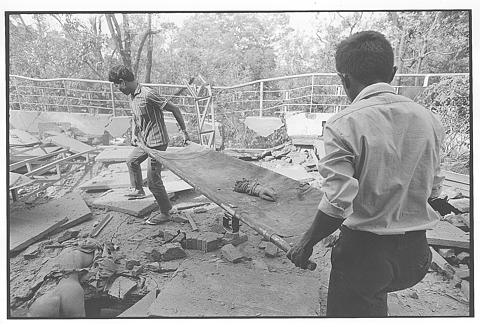
"People though the worst was over ... little did they know it had just begun."
Rockoff had an eerie first hint of the harsh reality of Cambodia's new order later that afternoon, when along with New York Times correspondent Sidney Schanberg and Cambodian interpreter Dith Pran he was detained by Khmer Rouge troops on the Japanese Bridge in central Phnom Penh.
"A Khmer Rouge soldier opened up Schanberg's travel bag and found his US$10,000 of `emergency money' and some underwear," he explained. "The soldier fanned through all the notes carefully, then took the underwear, leaving the money in the bag for Schan-berg."
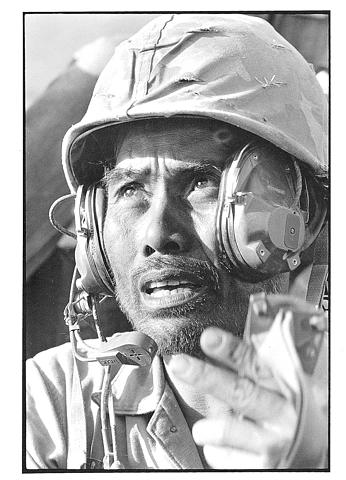
The symbolism of the soldier's disdain for money did not escape Rockoff -- in the pure, hard flame of the Khmer Rouge revolution, money was a fetish of the old society that was coming to an end. Rockoff becomes visibly angry at the mention of Schanberg, whom he accuses of deliberately and maliciously sabotaging his career.
"Schanberg left on the first convoy out of the French Embassy and asked me for the rolls of film that I'd shot," Rockoff said heatedly.
"When I told him that I was on day rate for Newsweek and that he could only have the pictures they didn't want he said `See if the New York Times ever runs any of your stuff again.'"
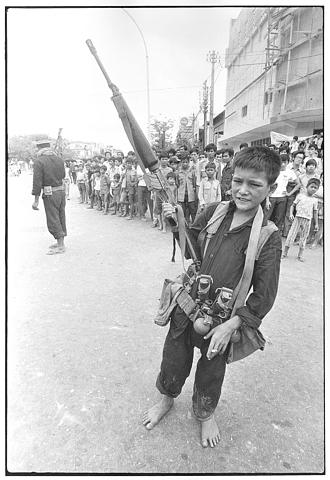
In the end Newsweek only ran three of Rockoff's photos, and upon his return to the US he was relegated to the journalistic margins, the vast majority of his work unseen.
Insult was added to injury following the release of the movie The Killing Fields, which Rockoff insists is full of "slanderous" misrepresentations of the historical record.
Rockoff remains incensed by the movie's representation of Schanberg as a concerned, sensitive individual who agonized over the fate of his Cambodian interpreter, Dith Pran.
"Schanberg is a coward who put other people's lives in danger," Rockoff barked angrily. "He used and abused Dith Pran and personally tried to have me thrown out of the safety of the French Embassy in April 1975."
Rockoff is most aggrieved at one of the scenes most emotional moments: when a photograph that Malkovich as Rockoff has taken of Dith Pran for a false passport is spoiled by a chemical reaction.
According to Rockoff and others who were present, the scene is completely fictional.
"It never happened," Rockoff said. "That movie blames and slanders me."
Through his exhibition and a planned book of photographs documenting the Cambodian conflict and its post-Khmer Rouge reconstruction, Rockoff hopes to correct what he feels are equally serious public misconceptions about the destruction of Cambodia he chronicled in the 1970s.
"A lot of people don't even remember what the war [in Cambodia] was all about, and specifically the role of the [1970] American invasion in what eventually happened here," he said grimly. "The blood debt that America owes Cambodia is a big one."

WAITING GAME: The US has so far only offered a ‘best rate tariff,’ which officials assume is about 15 percent, the same as Japan, a person familiar with the matter said Taiwan and the US have completed “technical consultations” regarding tariffs and a finalized rate is expected to be released soon, Executive Yuan spokeswoman Michelle Lee (李慧芝) told a news conference yesterday, as a 90-day pause on US President Donald Trump’s “reciprocal” tariffs is set to expire today. The two countries have reached a “certain degree of consensus” on issues such as tariffs, nontariff trade barriers, trade facilitation, supply chain resilience and economic security, Lee said. They also discussed opportunities for cooperation, investment and procurement, she said. A joint statement is still being negotiated and would be released once the US government has made

NEW GEAR: On top of the new Tien Kung IV air defense missiles, the military is expected to place orders for a new combat vehicle next year for delivery in 2028 Mass production of Tien Kung IV (Sky Bow IV) missiles is expected to start next year, with plans to order 122 pods, the Ministry of National Defense’s (MND) latest list of regulated military material showed. The document said that the armed forces would obtain 46 pods of the air defense missiles next year and 76 pods the year after that. The Tien Kung IV is designed to intercept cruise missiles and ballistic missiles to an altitude of 70km, compared with the 60km maximum altitude achieved by the Missile Segment Enhancement variant of PAC-3 systems. A defense source said yesterday that the number of

‘CRUDE’: The potential countermeasure is in response to South Africa renaming Taiwan’s representative offices and the insistence that it move out of Pretoria Taiwan is considering banning exports of semiconductors to South Africa after the latter unilaterally downgraded and changed the names of Taiwan’s two representative offices, the Ministry of Foreign Affairs (MOFA) said yesterday. On Monday last week, the South African Department of International Relations and Cooperation unilaterally released a statement saying that, as of April 1, the Taipei Liaison Offices in Pretoria and Cape Town had been renamed the “Taipei Commercial Office in Johannesburg” and the “Taipei Commercial Office in Cape Town.” Citing UN General Assembly Resolution 2758, it said that South Africa “recognizes the People’s Republic of China (PRC) as the sole

Taiwanese exports to the US are to be subject to a 20 percent tariff starting on Thursday next week, according to an executive order signed by US President Donald Trump yesterday. The 20 percent levy was the same as the tariffs imposed on Vietnam, Sri Lanka and Bangladesh by Trump. It was higher than the tariffs imposed on Japan, South Korea and the EU (15 percent), as well as those on the Philippines (19 percent). A Taiwan official with knowledge of the matter said it is a "phased" tariff rate, and negotiations would continue. "Once negotiations conclude, Taiwan will obtain a better